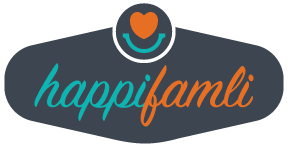Recently, I had to make the difficult decision to pull my son out of his beloved preschool. There was nothing wrong with the school itself, the days and times available for the pre-kindergarten program just didn’t work for our family. We spent the entire summer touring schools and programs, and I spent many sleepless nights wondering if we would make the right choice. We finally made a decision after weighing the pros and cons of each school and doing as much research as possible. If you are in the process of looking for and evaluating preschools, here are some tips and resources to help you out.

Looking for a Preschool
Nowadays, we have substantial access to word-of-mouth recommendations due to the many outlets of communication we have with other parents. We now have access to online reviews and discussion boards on social media. However, an online search can be incredibly overwhelming and relying discussion boards may cause you to miss out on a school that could really work for you and your family. HappiFamli’s Preschool and Childcare Guide is an excellent resource that includes an extensive list of schools in the Austin area and it can help you find exactly what you’re looking for.
Once you see the amount of options for preschool and childcare options available in the guide, you may want to determine what type of school is best for your child based on your priorities for your children. HappiFamli’s guide lists and describes the most popular types of schools, including:
– Montessori schools, which are based on the idea that children learn individually at their own pace and teachers are there for guidance. They also emphasize the importance of children being responsible for and taking care of their own belongings.
– Language Immersion schools, where most of the class is taught in a particular language in order to help the students begin to understand the language and encourage them to speak it on their own.
– Play-Based schools, which is based on the belief that most of children’s learning comes from free play and encourages the students to participate in age appropriate activities.
“Play is the most essential tool for children to have in their early childhood development.“
Evaluating a Preschool
When I was obtaining my master’s degree in Family and Child Development, we used the NAEYC as a primary source to obtain the most up-to-date philosophies and research information to apply to our future experiences in early childhood education. You can visit the NAEYC website to learn about all of their expectations for early childhood programs, but a few of them include:
– Promoting a healthy and safe learning environment
– Using diverse and developmentally appropriate teaching approaches
– Employing educationally qualified, knowledgeable, and committed professionals
– Implementing strong policies to encourage high quality experiences for staff, students, and parents
HappiFamli’s guide also provides a list of things you should take into consideration when touring schools and childcare programs. For example:
-Do the children have various types of experiences throughout the day?
-Is there a strong connection between home and school?
-Will they be monitoring the child’s progress and adjusting teaching methods on an individualized basis?
These are questions that can be asked before making a decision in order to make the best choice when you are finally ready to enroll.
Many choices will be narrowed down by cost, hours of operation, and location, but the amount of things to consider when choosing a school may still seem overwhelming. I know that I felt an immense amount of stress and pressure when it was time to finally make a decision on my son’s pre-k program. But what helped relieve some of my anxiety was when I remembered the number one thing I took away from the years I spent in my graduate program: Play is the most essential tool for children to have in their early childhood development. This doesn’t mean that the other areas of assessment are not important (obviously, please make sure that the program is clean and safe). However, with the wide variety of philosophies and learning styles available, I personally believe it is most important to find a program that recognizes that each child is an individual and allows for that child to learn by doing what children are meant to do: play!
